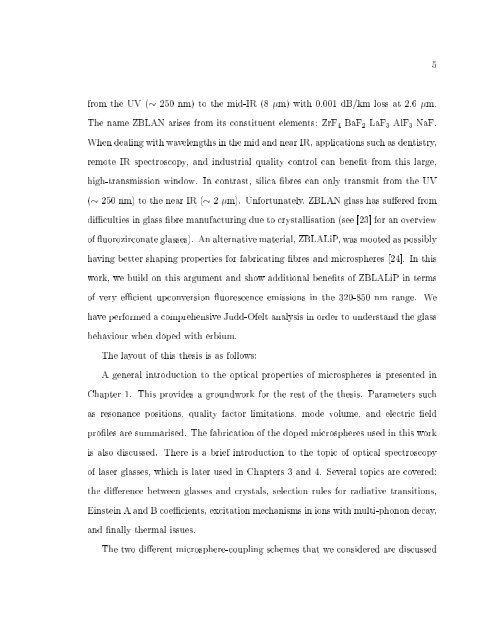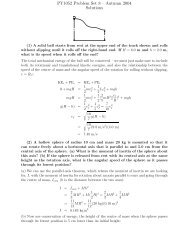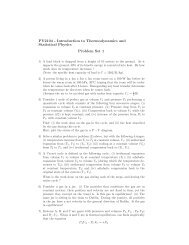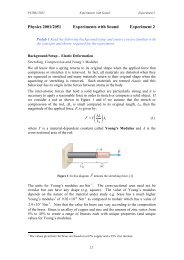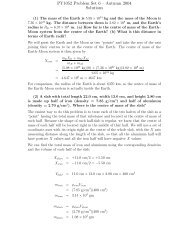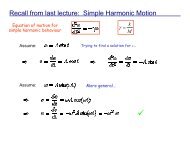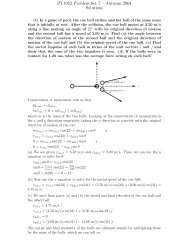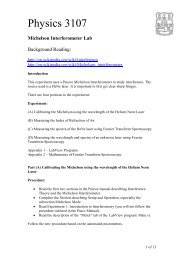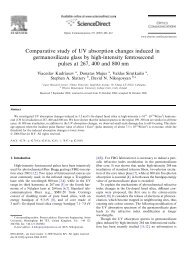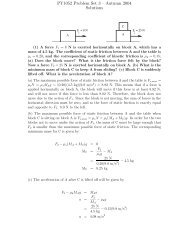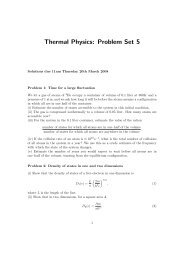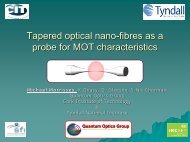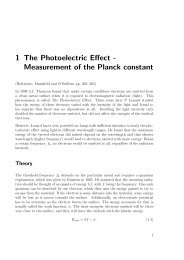optical characterisation of rare-earth doped fluoride and phosphate ...
optical characterisation of rare-earth doped fluoride and phosphate ...
optical characterisation of rare-earth doped fluoride and phosphate ...
- No tags were found...
Create successful ePaper yourself
Turn your PDF publications into a flip-book with our unique Google optimized e-Paper software.
5from the UV ( 250 nm) to the mid-IR (8 m) with 0.001 dB/km loss at 2.6 m.The name ZBLAN arises from its constituent elements: ZrF 4 BaF 2 LaF 3 AlF 3 NaF.When dealing with wavelengths in the mid <strong>and</strong> near IR, applications such as dentistry,remote IR spectroscopy, <strong>and</strong> industrial quality control can benet from this large,high-transmission window. In contrast, silica bres can only transmit from the UV( 250 nm) to the near IR ( 2 m). Unfortunately, ZBLAN glass has suered fromdiculties in glass bre manufacturing due to crystallisation (see [23] for an overview<strong>of</strong> uorozirconate glasses). An alternative material, ZBLALiP, was mooted as possiblyhaving better shaping properties for fabricating bres <strong>and</strong> microspheres [24]. In thiswork, we build on this argument <strong>and</strong> show additional benets <strong>of</strong> ZBLALiP in terms<strong>of</strong> very ecient upconversion uorescence emissions in the 320-850 nm range. Wehave performed a comprehensive Judd-Ofelt analysis in order to underst<strong>and</strong> the glassbehaviour when <strong>doped</strong> with erbium.The layout <strong>of</strong> this thesis is as follows:A general introduction to the <strong>optical</strong> properties <strong>of</strong> microspheres is presented inChapter 1. This provides a groundwork for the rest <strong>of</strong> the thesis. Parameters suchas resonance positions, quality factor limitations, mode volume, <strong>and</strong> electric eldproles are summarised. The fabrication <strong>of</strong> the <strong>doped</strong> microspheres used in this workis also discussed. There is a brief introduction to the topic <strong>of</strong> <strong>optical</strong> spectroscopy<strong>of</strong> laser glasses, which is later used in Chapters 3 <strong>and</strong> 4. Several topics are covered:the dierence between glasses <strong>and</strong> crystals, selection rules for radiative transitions,Einstein A <strong>and</strong> B coecients, excitation mechanisms in ions with multi-phonon decay,<strong>and</strong> nally thermal issues.The two dierent microsphere-coupling schemes that we considered are discussed


